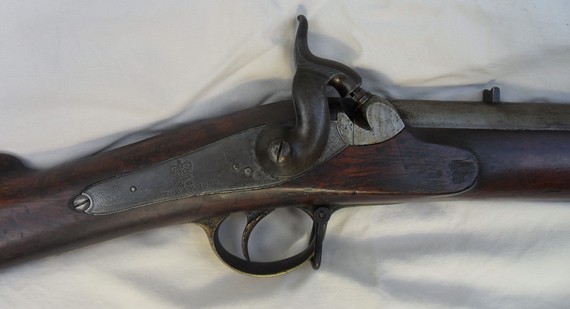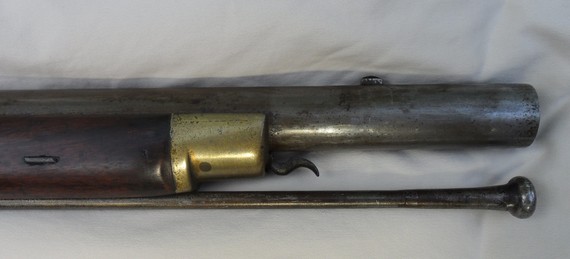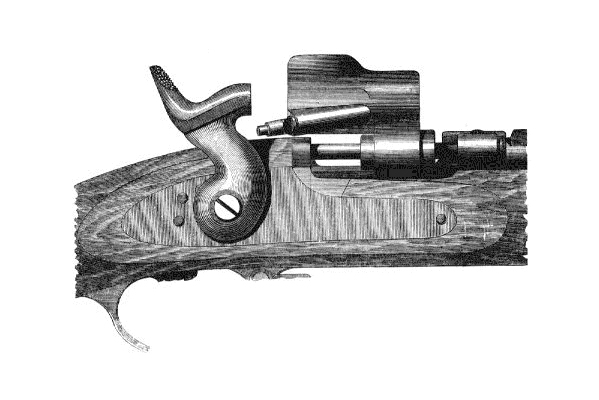You are here: Home > Firearms > British Military Longarms
Written by: Adrian Roads


The days of the flintlock action were numbered when Alexander Forsyth began experiments, in 1805 in the Tower of London, aimed at harnessing the power of exploding fulminates as a means of ignition. His work was expanded upon by others which eventually led to the “Musket, Rank and File for Foot Guards”, the first percussion musket to be issued in quantity to British soldiers. Today we usually simply call it the Pattern 1838, and examples are quite rare.


The most significant feature of this musket was Lovell’s adoption of a “back action” percussion lock. Other features were a catch to retain the socket bayonet called a “Hanoverian Catch”, the employment of a hook breech, sometimes called a “false” or “break-off” breech, and three keys to hold the barrel in place, rather than using pins. Production continued until the mid 1840s and some Foot Guards were still armed with this musket in the mid 1850s. As with many arms variations do occur and the P/1838, despite its relatively limited issue, was certainly no exception. Minor differences are to be found with lock plate markings, butt tang profiles, nipple lump profile, breech shape, breech design and lock sizes.
